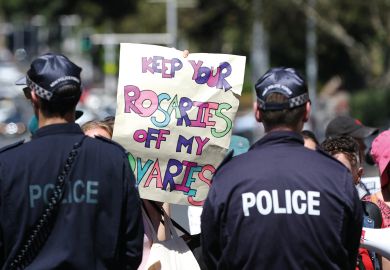It is widely believed that novels and television series featuring forensic scientists helped to attract students to the discipline. Real engagement with the challenges and rewards of an unusual job can generate far greater interest than any vague claims about career opportunities and earnings potential. So if those working in linguistics are ever worried about student shortages, they might want to encourage potential applicants to take a look at John Olsson’s intriguing book on “solving crimes with linguistics”, More Wordcrime (Bloomsbury Academic).
Olsson is himself a forensic linguist and an adjunct professor at Nebraska Wesleyan University, and his book features a series of compelling and sometimes horrifying cases that he has worked on.
One involves a failed businessman who befriended the owner of luxury cattery and “borrowed” a good deal of money from her on the pretext that he would invest it in a business. She kept asking for an update, and he eventually decided to kill her and to destroy the evidence by mutilating and setting fire to her body. While he was engaged in this gruesome task, her phone received a text message from a customer who wanted to come round shortly, so he sent a reply (in her name) to delay the visit. Olsson was able to compare this and a follow-up message with genuine texts produced by both the victim and the alleged murderer to come to an informed judgement about who had written them.
Some of the examples seem pretty clear-cut. One features a happily married 36-year-old doctor who was investigated by her national medical registration agency on the grounds that she had written love letters to an elderly patient. Fortunately for her, the letters that she was alleged to have written revealed a native English speaker’s idiomatic fluency, while her answers to the disciplinary committee were full of phrases such as “if they are cancel” and “I know what date I’m graduate”.
Elsewhere, however, Olsson cites as evidence much more minor details: the presence or absence of a space after a colon, the placing of the word “only” in a sentence and unusual spellings. All these can be suggestive, although rarely conclusive, in identifying criminals or exonerating suspects.
Two chapters touch on different forms of plagiarism. One occurred, according to Olsson, when police officers colluded with each other to cover up their failings at the time of the 1989 Hillsborough stadium disaster. Although the testimonies of individual officers were never identical, the variations reflected the fact that “when plagiarists ‘mosaic’ somebody else’s writing they almost always make it more elaborate. Anybody who has marked the work of student plagiarists will know this to be true.”
And what about the student who made the mistake of posting a request for help with an essay and then was accused of using an essay mill because her “mid-term essay had received a much lower mark than the end-of-term essay”? Olsson was unconvinced, not only because essays obtained from essay mills are generally “of a very inferior quality” but because he could point to certain stylistic peculiarities common to both essays. What he found really odd, however, was that “the university was effectively saying that it…did not have any faith in the quality of its own teaching”.
Register to continue
Why register?
- Registration is free and only takes a moment
- Once registered, you can read 3 articles a month
- Sign up for our newsletter
Subscribe
Or subscribe for unlimited access to:
- Unlimited access to news, views, insights & reviews
- Digital editions
- Digital access to THE’s university and college rankings analysis
Already registered or a current subscriber?







